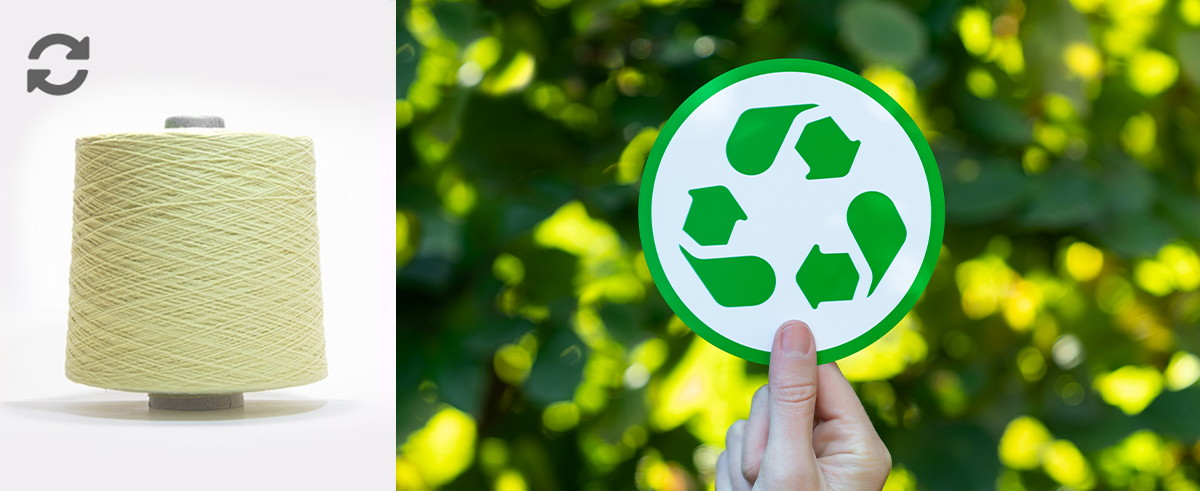Circularity and green economy are concepts that we are used to read about and to work with in many markets and fields, in particular in the textile industry, which is one of the biggest polluters.
Basically, the idea is to develop sustainable and recyclable resources in order to reduce waste. The keyword is sustainability, because nowadays every entrepreneurial activity must be attentive towards the environment, take advantage of renewable resources and improve the R&D processes in order to minimize waste and/or effectively recycle it.
But did you know that the same concept can also be applied to the protection apparel market? As a matter of fact, recycling is possible for protective garments and technical fibers as well.
Surely it is easier and it seems more acceptable to buy a T-shirt produced with recycled cotton, rather than a protective glove that will be used during an 8-hour shift in a blast furnace.
Indeed, many people seem to consider recycled and regenerated fibers as weaker, lower quality or less suitable for safety garments used in dangerous activities.

Actually, many studies proved the opposite: most of the typical properties of technical fibers remain the same after recycling. Some characteristics may even improve as a result of this process.
For example, after the recycling of para-aramid waste from bulletproof vests, the material maintains its technical qualities such as heat and cut resistance. Furthermore, it has been shown that during the recycling process the mobility of the fibrils is increased – for this matter, the yarn produced with para-aramid regenerated fibers is bulkier and consequently more insulating than the same yarn produced with non-recycled fibers.
Since 2012 we have had a dept. that is dedicated to spinning technical yarns produced only with reprocessed fibers. Being “green” is fundamental during your job, not only at the week-end!
Contact us for further information about recycled yarn characteristics and their technical applications
Ask us about the yarns we produce and the technical fibers we can recycle. This way you will discover how recycled yarn can be used in your intended application, or maybe also how the waste you produce can be used for the spinning of yarn, building a circular economy.


